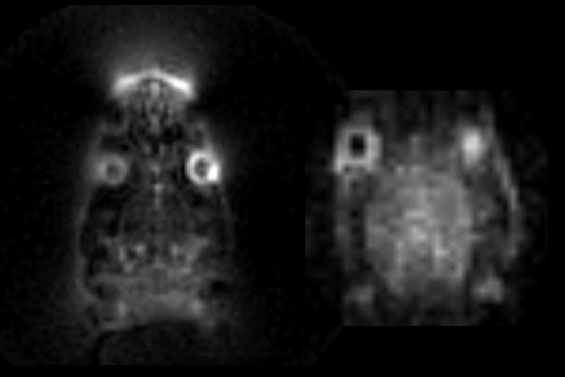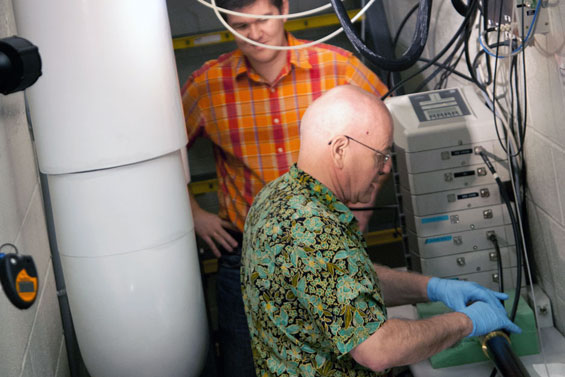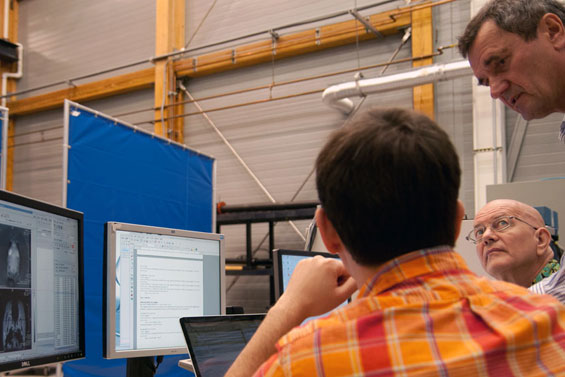Who is the scientist?
Michael Harrington, director of molecular neurology at Huntington Medical Research Institutes in Pasadena, Calif., studies the mechanisms of neurological disorders including migraine and Alzheimer’s disease.
What is he putting in the magnet?
Short answer: A rat.
Longer answer: In collaboration with scientists at the MagLab and Vanderbilt University, Harrington is conducting a series of experiments aimed at better understanding the cause and treatment of migraines in humans. For this important research, his team is using nothing less than the strongest MRI machine in the world — the MagLab's 900 MHz magnet.
MRI machines use magnets and pulses of radio waves to create scans that show the inside of the body. Hospital MRI machines locate the water in the body to create images of the body's soft tissue, revealing the presence of tumors, among other things.
The 900 MHz features a very powerful magnet. Boasting a field of 21.1 tesla, it is about 10 times stronger than a typical hospital MRI magnet, generates far more detailed images, and allows chemical imaging of molecules not possible with weaker magnets. But due to magnet design constraints, such a powerful magnet means the area inside the MRI machine where the patient goes (called the bore) must be much smaller. About 4 inches in diameter, the bore of the 900 MHz is not big enough to fit a person — but it can accommodate rats. So scientists studying diseases like Parkinson's, cancer and drug addiction with the 900 MHz often use rodents as models of human systems.
In this case, Harrington injects rats with nitroglycerin to trigger a migraine, then uses different MRI techniques to, in effect, watch a migraine take hold of the animal's brain.
Why do I care?
Migraine afflicts an estimated 10 percent of the world's population and attacks can be very severe. Yet we still don't know the cause, and existing treatments aren't always effective.
To shed light on this issue, Harrington is trying to trace the path of migraine pain through the brain. He is using MRI techniques that show the movement of certain ions between brain cells, which point to to how rapidly nerve cells can talk to each other.
By studying a series of MRI scans taken over time, Harrington and his team hope to locate the root pathway in the brain that is ground zero for a migraine. From there, they plan to observe the cascade effect as pain branches out from there, blazing a trail through the vast network of neurons.
Later in this study, Harrington's team will test different drugs and, again applying a variety of MRI techniques, observe how, and how well, they work.
Rodents that are studied in MRI experiments at the MagLab are placed in special tubes (called probes) designed to ensure the animal's comfort — much as MRI technicians look after the well-being of their human patients. Unlike most people imaged in MRIs, these animals are kept under anesthesia during the entire procedure, and receive fluids intravenously.
"This research has the potential to help improve knowledge for both the cause and treatment of migraines," said Harrington, "which we can then translate to better hope for the many who suffer migraine."
Story By Kristen Coyne, Photos by Dave Barfield





